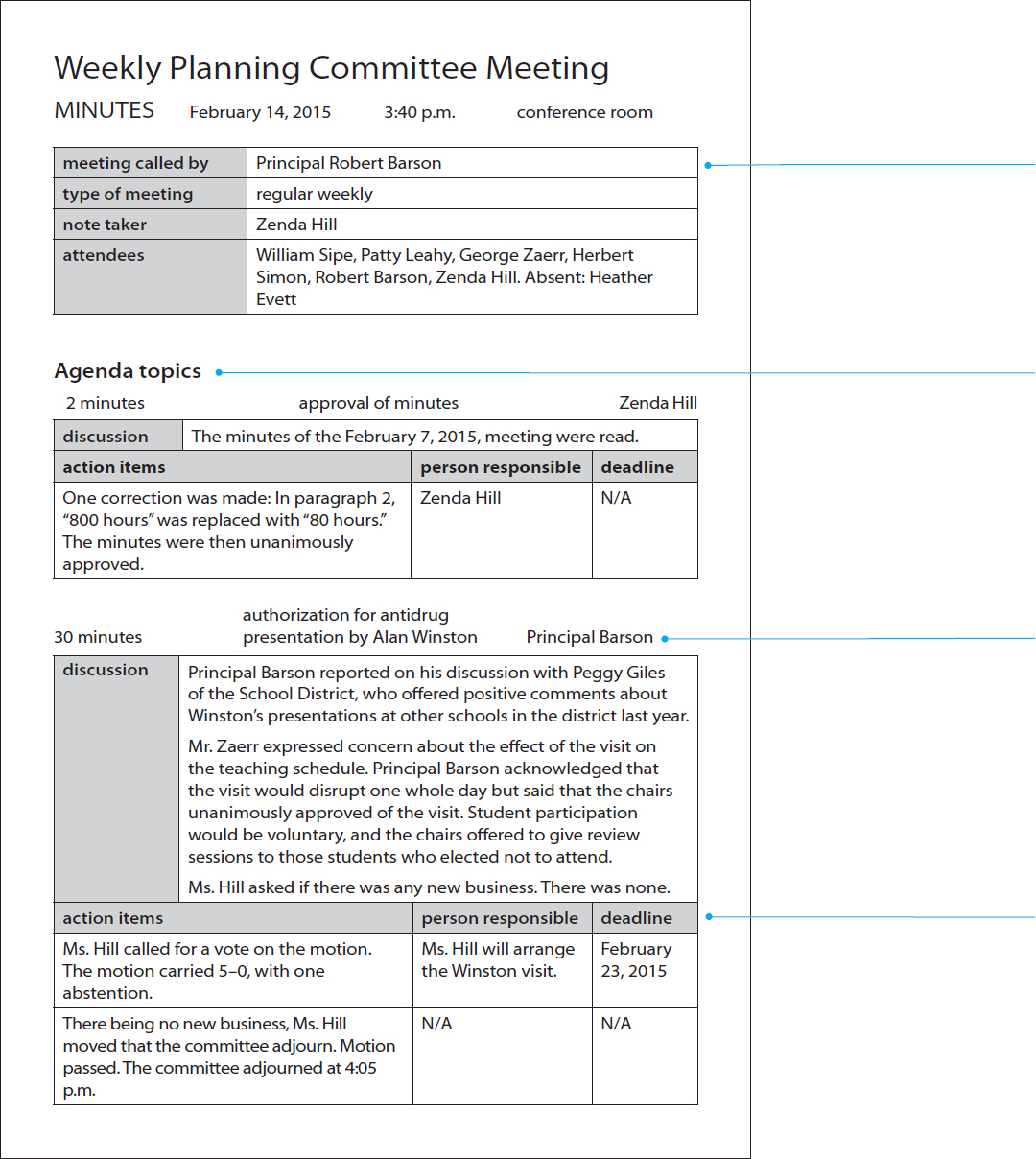Writing Meeting Minutes
Printed Page 464-465
Writing Meeting Minutes
Minutes, an organization’s official record of a meeting, are distributed to all those who belong to the committee or group represented at the meeting. Sometimes, minutes are written by administrative assistants; other times they are written by technical professionals or technical communicators.
In writing minutes, be clear, comprehensive, objective, and diplomatic. Do not interpret what happened; simply report it. Because meetings rarely follow the agenda perfectly, you might find it challenging to provide an accurate record of the meeting. If necessary, interrupt the discussion to request a clarification.
Do not record emotional exchanges between participants. Because minutes are the official record of the meeting, you want them to reflect positively on the participants and the organization. For example, in a meeting a person might say, undiplomatically, that another person’s idea is stupid, a comment that might lead to an argument. Don’t record the argument. Instead, describe the outcome: “After a discussion of the merits of the two approaches, the chair asked the Facilities Committee to consider the approaches and report back to membership at the next meeting.”
Figure 17.6, an example of an effective set of minutes, was written using a Microsoft template. Many organizations today use templates like this one, which has three advantages:
The first section of this template calls for information about the logistics of the meeting. You can modify the template to make it appropriate for your organization.
The second section of this template is devoted to the agenda items for the meeting.
Note that for each agenda item, the note taker is prompted to state how long the discussion took, the subject of the discussion, and the name of the person leading the discussion.
For each agenda item, the note taker records the main points of the discussion and the action items. Because the template calls for the action item (such as a vote or a task to be done), the name of the person responsible for doing the task, and the deadline for the task, there should be no confusion about who is to do which task and when it is due.

- Because it is a word-processing template, the note taker can enter information on his or her computer or tablet during the meeting, reducing the time it takes to publish the minutes.
- Because the template is a form, it prompts the note taker to fill in the appropriate information, thus reducing the chances that he or she will overlook something important.
- Because the template is a table, readers quickly become accustomed to reading it and thereby learn where to look for the information they seek.